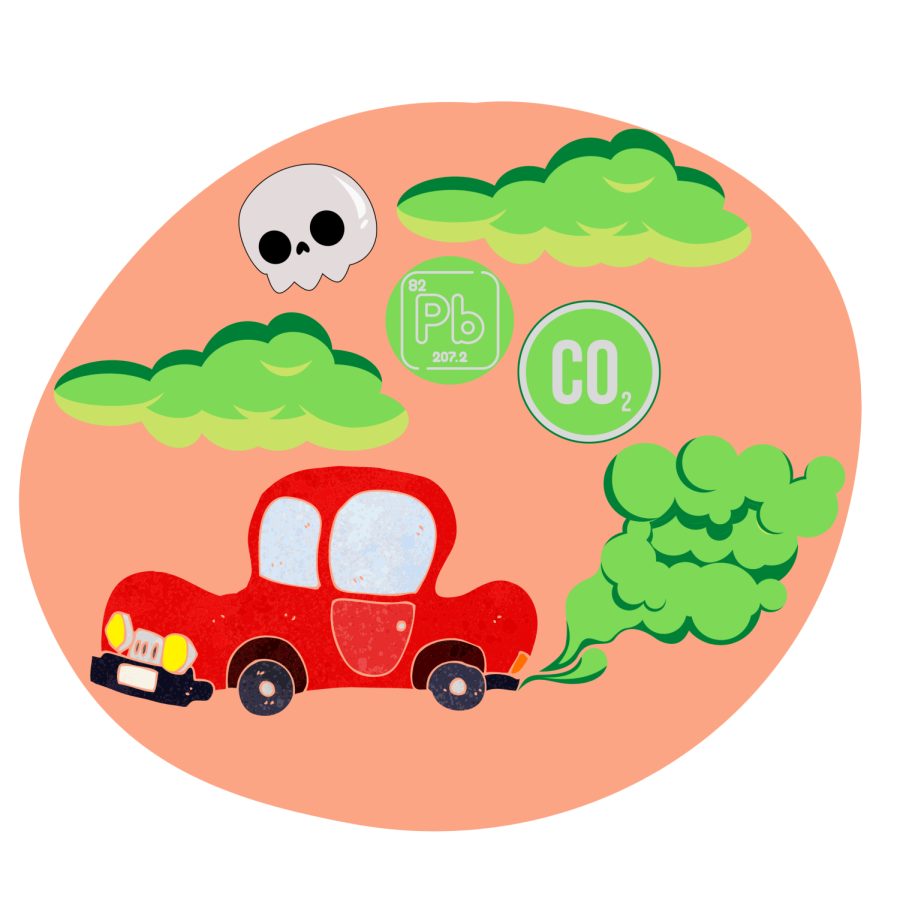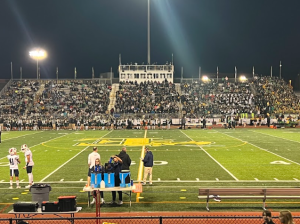How car culture counters public health
Nov 9, 2022
This previously ran in our October 2022 Print Issue.
COVID-19 was the most impactful pandemic to the United States, certainly in the span of a few years. No one likes it, even if a select few of us may have made a few billion dollars off of it. COVID-19, unquestionably, is bad. And that’s because it does not directly benefit anyone. It may shape the economy to draw hundreds of million dollars away from working-class households and into the pockets of the super-wealthy, but that’s a byproduct. No one directly benefits from the COVID-19 pandemic, period.
But when someone does benefit, this all changes. In the capitalist system of the U.S., epidemics, biological or not, are encouraged by the free market.
A clear example of this is leaded gasoline. For some context, there is something known as “knock” in an internal combustion engine — when fuel is ignited with improper timing, decreasing the efficiency of the engine and possibly damaging it. To avoid this, fuel needs octane — while an oversimplification, this means adding oxygen, a necessary element in the combustion process.
In 1921, General Motors discovered that lead would add octane to the gasoline at a cheaper cost than ethanol or benzene, two of the other octanators at the time.
Three years after this development, in 1924, more than a dozen refinery workers died of suspected lead poisoning. The Surgeon General ordered the stoppage of all leaded gasoline production and launched an inquiry into the effects of leaded gasoline on the public health. To the detriment of all of us, the inquiry found insufficient evidence to outlaw leaded gasoline, but did foreshadow the future with their warning of “chronic degenerative diseases of a less obvious character.”
In 1970, the Clean Air Act would be passed, and in 1973, the Environmental Protection Agency mandated the slow process of phasing out leaded fuels. In 1996, leaded gasoline sales, already far beneath their peak, were banned from use in on-road vehicles, and the overwhelming majority of fuel everywhere is lead free.
But for those 73 years of lead gasoline, there were terrible, terrible effects. Children, with especially vulnerable bodies, suffered from developmental disorders and lower IQs, even when only exposed to a low, background level of it. In the 60-year stretch between 1927 and 1987, an estimated 68 million children were exposed to toxic levels of lead from gasoline.
In adults, the lead caused hypertension and cardiovascular disease. Before 1973, on average, 200,000 tons of lead were used in gasoline every year, with much of that going directly into the air we breathe today.
While there is a gray area in the creation of leaded fuel, by the 50s, companies had known the severe effects lead could have. And if they didn’t know immediately, they should have taken action as soon as they found out.
In 1924, when their employees died, and many others had to be put into straitjackets from working in a refinery, immediate action should have been taken. General Motors, Standard Oil, and all the other automobile companies knew the damage they were causing, aimless damage that hurt everyone, not just the underbelly of society that was so frequently overlooked.
Suburban families, urban workers, and rural farmers all were breathing the same air, and while it may have been better or worse in some places, the lead was ultimately a plague on society as a whole.
They knew of alternatives to lead that would reduce knock on gasoline. Ethanol and benzene, while a far cry from environmentally friendly, didn’t aid in millions of premature deaths and years of bad health (at least, not when in gasoline). Companies choose their profit margins over their consumers, over the health of the nation.
The only difference between then and now is marketing. Now, companies are smart enough to brand themselves as clean. Now, companies have seen enough history to know which politicians to lobby and donate to. Now, companies know it’s important to fund research on fossil fuels, to make sure the right results come up.
And that’s why the land-yacht has returned. Starting in 1977, during the fall of leaded fuel, cars began to shrink from masculine beasts to reasonably sized sedans. These sedans became more popular, with cars being designed as a tool of transportation instead of a status symbol.
But in this process of making cars more reasonable, America as a nation missed an opportunity for something great.
Maybe it was because of the relentlessly capitalistic foundation of American society, or the ruthless individualism so highly prioritized in the American working man, or maybe even an effect of Reagan’s trickle-down economics after a few brain cells trickled into his skull.
Just as America had a chance to finally relinquish car culture, to free its society from the needs of $30,000 vehicles, the need of a garage, gas, and repairs (and many other expenses), we turned our backs on progress. The reactionary media put in power by the Cold War and McCarthy returned the automobile to the American dream, right alongside the all-white suburban development, water-sucking golf course, and in-bred family dog.
Anyone who wanted equitable public transportation, wanted readily available, affordable bus and train rides to work and neighboring cities, even across the country, was a godless communist that hated individual liberty.
The United States of America could be a utopia of 15-minute cities, with a bullet train able to make a run from L.A. to NYC in less than a day. You could pick up your groceries and bring them back to your condo with a view of Central Park in a few minutes, instead of spending half an hour and $20 trying to park your Suburban.
Instead of clean(ish) electric buses and bullet trains bringing us from city to city in a matter of minutes, we spend hours in traffic jams, seeing how many pedestrians we can kill with a five-ton pickup truck with a clean bed. Researchers spend millions on R&D for more fuel-efficient engines only to put them on the next largest car and keep the emissions the same.
What we need isn’t blind consumerism. The shift to walkable infrastructure, to high-density, livable cities, and to regular public transportation is not an easy one. The automobile is as American as the school shooting, but by addressing the root of these issues and enacting social change, we can move forward.













